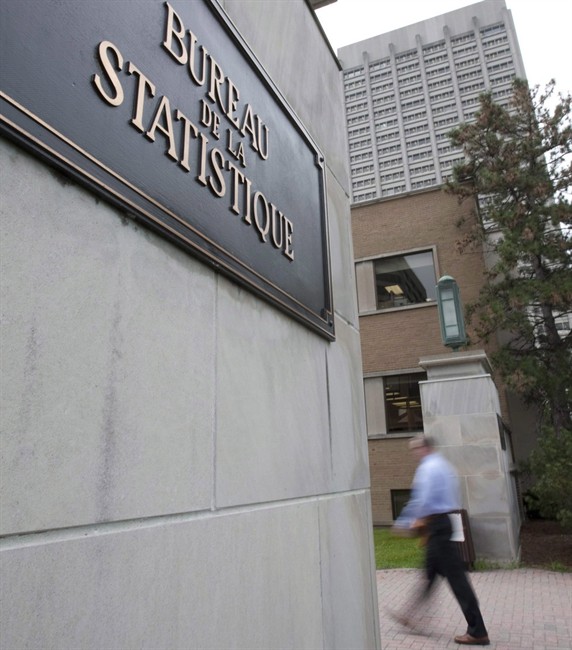OTTAWA – The financial health of Canadian households improved ever so slightly in the final three months of 2013, a development that will give some comfort to the Bank of Canada in maintaining its low-interest-rate policy.

Statistics Canada said Friday that household worth in the country rose by three per cent to $217,700 on a per capita basis in the fourth quarter, largely as a result of a sharp 5.9 per cent gain in the value of shares and other equities held by Canadians.
Overall, national net worth rose 2.7 per cent to $7.7 trillion in the fourth quarter, reaching $218,500 on a per capita basis, a 2.5 per cent gain from the third quarter.
And national net foreign debt fell by $98.1 billion, edging Canada into a net asset position of $26.7 billion, the agency said.
The most encouraging news was that households accumulated debt in the fourth quarter of last year at the slowest annualized pace since 2001, pushing the much-watched debt to disposable income ratio down two-tenths of a point to 164 per cent.
The decrease means Canadians owe nearly $1.64 for every $1 in disposable income they earn in a year.
While still at near-record levels, the measure has essentially stalled, as the Bank of Canada has predicted, and is likely to fall back further if housing cools and incomes keep rising as many expect.
Most other measures of financial health also improved, with net worth hitting an all-time high on the strength of rising home values and robust strong equity markets. As well, owner equity in real estate rose as did assets to debt.
“Canadians are easing back on their reliance on debt,” said Laura Cooper, an economist with RBC.
“It’s particularly good news for policy makers because the risks posed by household indebtedness seems to be easing. It does still pose a risk, but the easing allows the Bank of Canada to again focus on spurring inflation and closing the output gap.”
Cooper said she expects the moderating trend to continue as the housing market cools and fewer Canadians take out mortgages.
BMO chief economist Doug Porter cautions it may be too early to declare victory, however, noting that the household debt to income remains higher than a year ago, and that the winter months usually show a dip in the ratio.
“Still, today’s results should be mildly encouraging for policy makers, and suggest that the Bank of Canada’s view that imbalances are evolving constructively is reasonable,” he added.
The Bank of Canada has long warned about Canadians accumulating too much debt in this unusual era of low borrowing costs, but has been restrained from pushing back with higher rates for fear of damaging the economy. However, Finance Minister Jim Flaherty has moved to restrain borrowing, especially in the housing sector, with measures that made mortgages more costly for high-leverage borrowers.
At the end of the fourth quarter, Canadians held $1.1 trillion in mortgage debt, up 1.1 per cent from the third, and $508 billion in credit debt, up 0.5 per cent from the previous period.
However, the household debt service ratio — interest paid as a percentage of disposable income — remained at a record low, the agency noted, due to continuing low interest rates and income gains.
And household equity in held real estate rose marginally to 69.5 per cent.

Comments